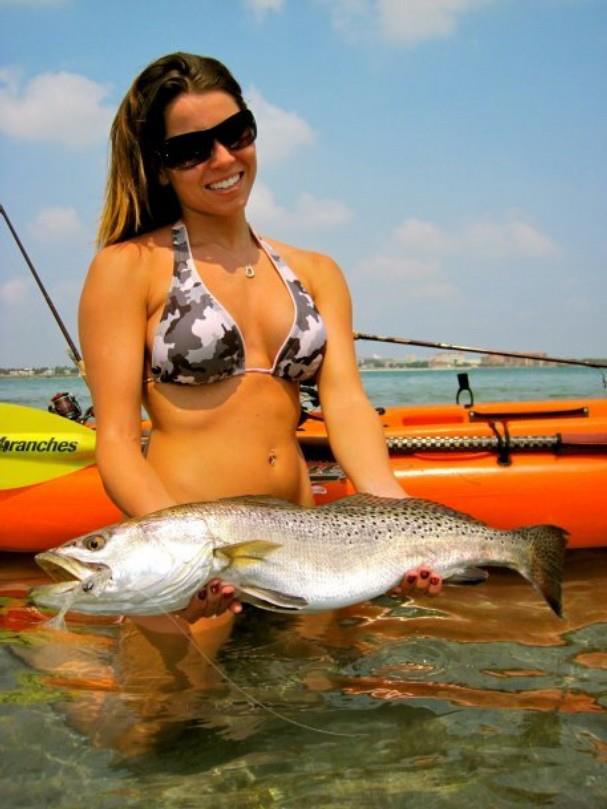By FRANK SARGEANT fsargean@tampabay.rr.com
Published: Jan 24, 2003
Finding Florida fish that will eat when the water temperature hovers around 50 degrees can be a real challenge, but according to a number of Tampa Bay-area guides, spotted sea trout are taking up the slack this month for lethargic snook and reds. “Get in the right spot and it’s pretty much all you want,” said captain Doug Hemmer, who often fishes the waters around the Intracoastal Waterway from St. Petersburg northward. “We’ve had 200-fish days within the last couple of weeks.” He said that the trick to finding fish is to work deep grass in water 4 feet and deeper, looking for flocks of diving cormorants and rolling porpoises. “The birds and the porpoises are where the bait is, and that’s where the trout are,” Hemmer said. He said most of the catches came on long-tailed jigs like the Love Lure Slugger, dragged right along the bottom. Hemmer said dark green seems to be one of the more effective colors. “I like to keep my rod tip down low and out to the side, and anytime I feel anything tug, I start reeling,” Hemmer said. Captain Billy Nobles of Apollo Beach said he has been connecting with good numbers of trout 15 to 20 inches long by fishing water 3 to 4 feet deep off the edge of the sandbar that rims the southeast shore of the bay. He said plastic shrimp or live shrimp fished under a popping cork do most of the damage. Captain Chet Jennings of Ruskin has been connecting with lunker trout to 5 pounds by fishing deeper potholes inside the bar along the south shore. “The best lure seems to be a soft jerkbait, and I fish it a lot slower than in summer,” Jennings said. “We don’t get a lot of the big ones, but we get one or two a day that will pull drag and then a lot of smaller ones.” And captain Ray Markham of Terra Ceia has been finding fish around the islands west of the Skyway, with most taking long-tailed jigs in the holes. “We’re typically getting 30 to 50 trout on decent days,” Markham said. He said fishing is best during the brief lulls between fronts, and that most days include plenty of ladyfish, a few blues and the occasional snook. All of the guides suggested that barbs on any hooks used for trout be flattened, and that fish to be released be handled as little as possible.
- Jay Mastry - March 26, 2024
- Captains Corner, Gorta - March 23, 2024
- Dave Zalewski - March 12, 2024











